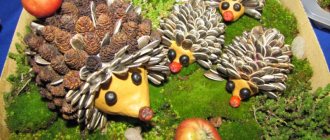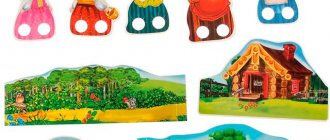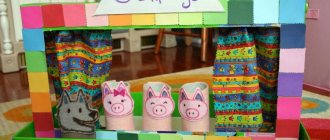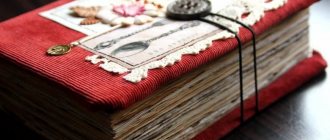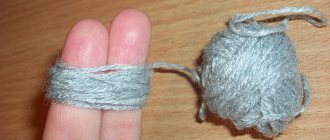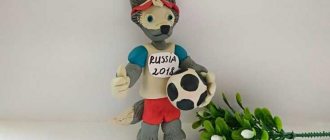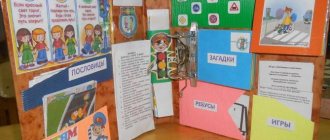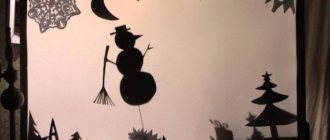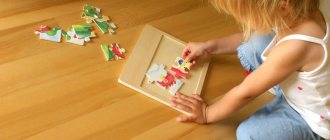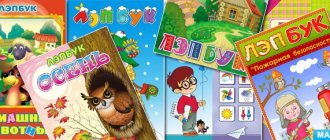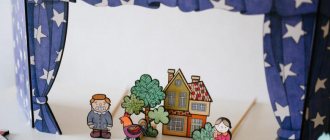Preparation of materials
Before starting work, you need to assemble a “utility box”, it will include all the necessary tools and materials that you cannot do without, namely:
- multi-colored soft felt 1 - 2 mm thick (country of production does not matter);
- a simple pencil and pen (professionals prefer self-disappearing fabric markers, in this case colored and white);
- 2-3 crayons with thin edges (since the details will be small);
- 2 types of sharp scissors (with blunt and sharp ends for ease of cutting patterns);
- pins or needles (the thinner the better);
- glue (as an option, “Moment Crystal”; ordinary second glue is not suitable, since it impregnates the felt and leaves marks), or a glue gun (if available);
- hole punch (for cutting out small circles);
- ready-made eyes for fairy tale characters (they are sold in handicraft stores) or beads;
- multi-colored cotton threads for hand and machine sewing;
- multi-colored satin ribbons 5 mm thick;
- thick cardboard measuring 20 cm by 30 cm (more is possible), you will need 2 sheets;
- padding polyester for stuffing the house (sold in Fabric stores).
Felt and working with it implies knowledge of the characteristics of this type of fabric , which will greatly simplify the process of sewing finger theater with your own hands and creating a pattern, namely:
- there are many types of felt (to create small parts it is more convenient to work with soft synthetic felt 1 mm thick);
- You can buy felt fabric in handicraft stores or on the Internet (both in sheets and by the meter). For fairy tale characters you will need many different colors, so it is better to purchase plain felt in sheets;
- felt does not fray or crumble when trimmed, which allows you to avoid processing the edges of the products;
- it is wear-resistant (however, with intensive use, pills form on some types of fabric);
- felt toys are very light due to the porous structure of the material;
- the fabric is very plastic and does not break when bent (hard felt can form creases when bent, so it is used for working with large parts).
How to make patterns
Before you start making patterns, it is useful to get acquainted with the types of finger theaters, which will help determine the direction of work.
Classification of finger theaters:
- A collection of toys that fit onto children's fingers, hiding them inside the doll.
- A set of characters with 2 round holes in the lower part of the body, into which the child’s index and middle fingers are inserted, creating movable legs for a fairy tale or cartoon character.
The first option is more practical and durable; these are the pattern patterns that will be offered in this article. However, if desired, any template can be slightly adjusted by adding holes and sewing the toys using the second method. You can make a finger theater from felt yourself, or find ready-made templates in books on handicrafts or on the Internet.
To make your own pattern, you need:
- determine which characters are to be “brought to life” and find what they look like;
- draw on paper the characters of the required size and all the details separately (arms, legs, cheeks, ears) or print a ready-made template from the computer screen. As a rule, toy patterns consist of the main part and the front parts;
- cut out parts;
A felt finger theater is made in several stages
- attach with pins to felt fabric and cut out according to the design without deviations;
- if the characters are planned to be double-sided, then the number of pattern pieces will double (the main thing here is consistency and not to get confused, first cut out one character and put the pieces together, then proceed to the next one). For beginning craftsmen, it is easier to start with single-sided dolls.
Turnip pattern:
You can easily and quickly sew such a wonderful puppet theater with your own hands Or you can even involve them in this exciting process! In this case, the toys will be educational in every sense.
